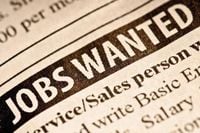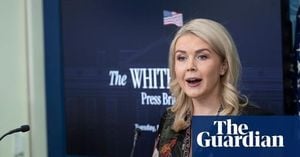Job seekers across the United States are facing an increasingly challenging landscape, with recent data painting a sobering picture of the modern job hunt. As hiring slows and competition intensifies, both applicants and employers are feeling the ripple effects, from major cities like New York to the heartland of Illinois.
A new survey conducted by online resume builder Zety, as reported by CNBC and Inc., reveals just how grueling the process has become for many Americans. More than half of the nearly 1,000 workers surveyed—each of whom had experienced a layoff in the past two years—said they needed to submit over 50 applications before finally landing a new job. For one in five respondents, the number was even more staggering: over 100 applications sent out before receiving an offer.
The emotional and logistical toll of this process can’t be understated. Applicants describe a relentless cycle—searching, tailoring resumes, filling out forms, and waiting for responses that often never come. More than 30 percent of those surveyed reported being unemployed for over 90 days before finding new work, and 5 percent endured more than a year without a job. Even for those who sprang into action quickly—one in three began searching immediately after a layoff, and more than three in four started within a month—the odds remained tough.
Switching industries appears to be a rare feat. Zety’s data shows that 85 percent of those who found new employment did so within the same sector as their previous job. The biggest barrier cited? The prospect of lower salaries, which nearly six in ten respondents named as their top concern. Other major hurdles included unclear job listings, sluggish interview and application processes, fierce competition, recruiter ghosting, and the awkward necessity of explaining a layoff during interviews.
These findings aren’t isolated. According to The New York Times, New York City—a traditional bellwether for national trends—has seen a dramatic slowdown in hiring. Only 956 private-sector jobs were added in the first half of 2025, marking the slowest payroll growth outside of a recession in decades. The city’s unemployment rate, at 4.7 percent, now exceeds both state and national averages and is particularly rough for young workers just entering the market.
Mark Zandi, chief economist at Moody’s Analytics, told The New York Times, “New York is a leading indicator, and the flattening of employment is now showing up nationally.” The implication is clear: what happens in New York often foreshadows broader national shifts, and the current stagnation could signal economic trouble ahead.
One factor complicating the job search for certain demographics is the rapid adoption of artificial intelligence in the workplace. The AI revolution is already displacing some entry-level positions, especially those traditionally filled by male Gen-Z workers. As companies automate routine tasks, the pool of available jobs shrinks, and competition becomes even more fierce. Meanwhile, sectors like healthcare and hospitality—fields where women are overrepresented—have so far proven more resistant to AI-driven job loss.
While these national trends are worrying, the situation in Illinois offers a nuanced perspective. According to the Illinois Department of Employment Security (IDES), total nonfarm payrolls in the state were nearly unchanged in July 2025, dipping by 2,500 jobs to a total of 6,165,600. The previous month’s payroll gain was revised sharply downward, from an initial estimate of 9,400 new jobs to just 2,300.
Some sectors in Illinois did see modest gains in July: Construction added 2,900 jobs, Trade, Transportation and Utilities grew by 1,700, and Private Education and Health Services increased by 1,100. However, these gains were offset by losses in Professional and Business Services (down 3,500 jobs), Government (down 2,900), and Leisure and Hospitality (down 1,200).
Despite this sluggishness, there’s a glimmer of hope in the year-over-year numbers. Compared to July 2024, Illinois added 20,300 nonfarm payroll jobs, with the biggest increases in Private Education and Health Services (+17,400), Government (+7,900), and Information (+3,900). Conversely, Professional and Business Services lost 11,000 jobs, Manufacturing shed 5,400, and Trade, Transportation and Utilities dropped by 1,700.
The state’s unemployment rate held steady at 4.6 percent in July, unchanged from June. The number of unemployed workers in Illinois was 300,700, down 2.1 percent from the previous month and 11.1 percent lower than a year ago. The labor force itself shrank slightly, both on a monthly and yearly basis.
Deputy Governor Andy Manar struck an optimistic note, saying, “The continued stability in Illinois’ unemployment rate and labor market highlights the strength of our state’s workforce. Through strategic investment and strong partnerships, we remain focused on expanding opportunities and supporting long-term economic growth across all communities.” Kristin Richards, Director of the Illinois Department of Commerce and Economic Opportunity, echoed this sentiment: “The continued stability in Illinois’ unemployment rate and payroll numbers reflects the strength of our state’s economy. As we build on this steady progress, DCEO remains committed to supporting job creation and retention for businesses across Illinois.”
But stability shouldn’t be mistaken for ease. IDES reported that Illinois JobLink, the state’s largest job search engine, had 63,551 posted resumes and 66,426 jobs available as of July 2025. While those numbers suggest opportunity, they also highlight the sheer volume of competition facing each applicant. IDES is working to connect jobseekers with employers through job fairs, hiring events, and online resources, but the gap between open positions and the number of active seekers is palpable.
For employers, this environment presents a double-edged sword. On the one hand, a flooded job market means more resumes to sift through and more time spent on recruitment. On the other, it offers a deeper pool of potential talent—if organizations are willing to invest the time to find the right fit. As Inc. notes, “Vetting large numbers of candidates will cost you more time and money, but there is an upside: With more people in the job pool, there may be more qualified applicants who could be an ideal fit.”
For jobseekers, the message is clear: perseverance is essential, and flexibility—whether in salary expectations, industry, or job function—may be the key to breaking through. With economic signals mixed and uncertainty in the air, both sides of the hiring equation will need to adapt to a labor market that’s as unpredictable as it is competitive.
As the summer of 2025 draws to a close, the job market remains a battleground of determination and resilience, with every application and interview a testament to the tenacity of those seeking a place in a shifting economy.





